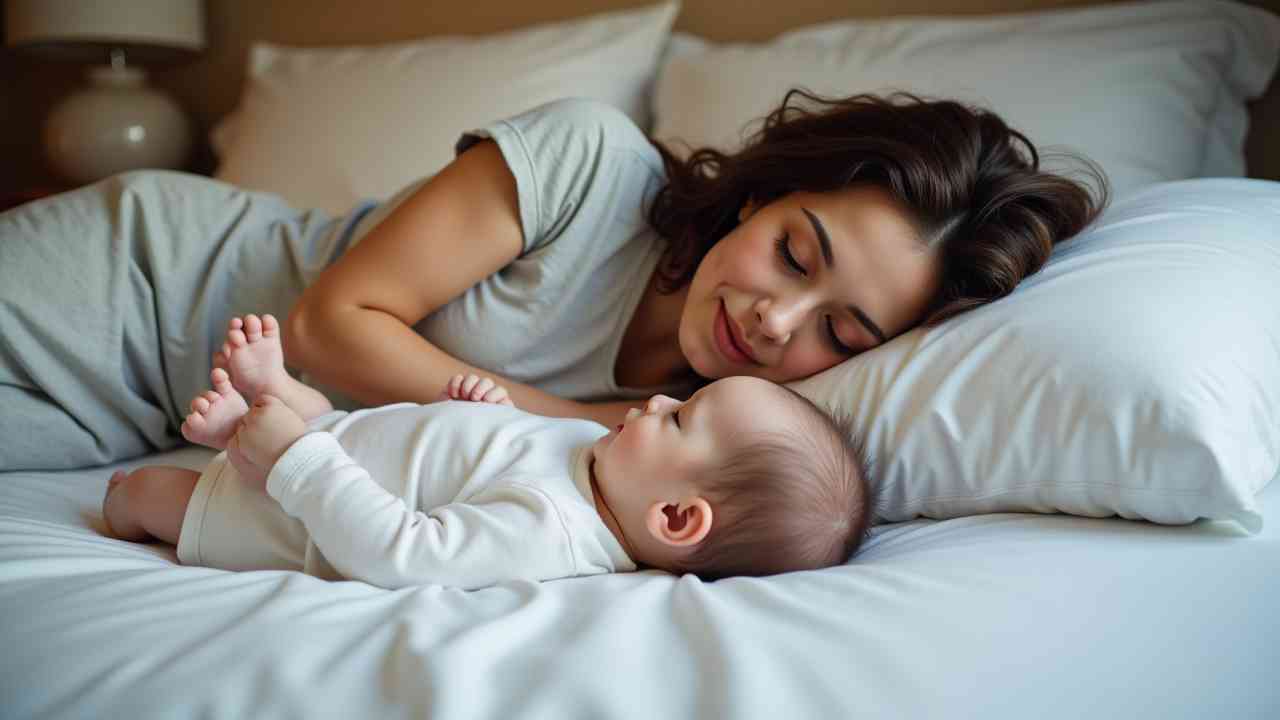
🛌 A Guide to a Safe Co-Sleeping Bedroom (Bed-Sharing Safety)
🛌 A Parent's Guide to a Safe Co-Sleeping Bedroom 🛌
For many families, co-sleeping or bed-sharing is a natural and intuitive way to care for a new baby. It can promote bonding and make nighttime breastfeeding much easier. However, it is a decision that comes with a great deal of responsibility. Creating a safe co-sleeping bedroom is the most important step you must take.
This guide will not debate the pros and cons of the practice. Instead, it will provide a clear, safety-focused checklist based on the recommendations of sleep experts. The goal is to reduce the risks as much as possible. Let's create a safer space for you and your baby. ✅
❗ CRITICAL HEALTH AND SAFETY WARNING: It is important to know that major health organizations, like the American Academy of Pediatrics (AAP), recommend room-sharing (baby sleeps in a separate crib or bassinet in the parents' room) but advise against bed-sharing due to an increased risk of SIDS and accidental suffocation. If you choose to bed-share, you must follow strict safety guidelines to minimize these risks.
🤔 First, What is a Safe Sleep Surface?
The bed itself is the most critical factor in a safe co-sleeping bedroom. Not all beds are safe for a baby. The surface must be:
- Firm and Flat: You must use a firm mattress. Never, ever co-sleep on a soft mattress, a waterbed, a sofa, an armchair, or a recliner.
- Free of Gaps: The bed must be pushed securely against a wall, or you must use guard rails. There should be absolutely no gaps between the mattress and the headboard or the wall where a baby could become trapped.
- Clear of All Loose Bedding: This is non-negotiable. The area around the baby must be completely free of pillows, loose blankets, duvets, and stuffed animals. A tight-fitted sheet is the only bedding that should be on the mattress.
- What Are the Rules for the Parent?
The parent's condition is just as important as the bed's condition. To co-sleep safely, the parent must:
- Be a Non-Smoker: The risk of SIDS is much higher if a parent smokes.
- Be Sober: You must not be under the influence of alcohol or any sedating medications or drugs that could impair your awareness.
- Tie Back Long Hair: Long hair should be tied up to prevent it from becoming a strangulation hazard.
- Sleep Alone with the Baby: The safest setup is one adult with the baby. There should be no other children or pets in the bed.
- How Should the Baby Be Positioned for Safe Co-Sleeping?
The position of the baby and the parent is a key part of the safety equation. This is the final and most important piece of the puzzle.
1. Baby on Their Back: The baby must always be placed on their back to sleep. This is a universal safe sleep rule.
2. The 'Cuddle Curl' or 'C-Position': The breastfeeding mother should lie on her side, facing the baby. Her knees should be bent up underneath the baby's feet. Her lower arm should be positioned above the baby's head. This creates a protective "C" shape around the baby. This position makes it almost impossible for the mother to roll forward or backward onto the baby. It also keeps her pillow and any blankets away from the baby's face.
As the cool autumn nights arrive, it can be tempting to use heavy blankets. Remember to keep the baby's sleep space clear. Dress the baby in a warm sleep sack instead of using loose blankets. Creating a safe co-sleeping bedroom is an act of love and vigilance. ❤️